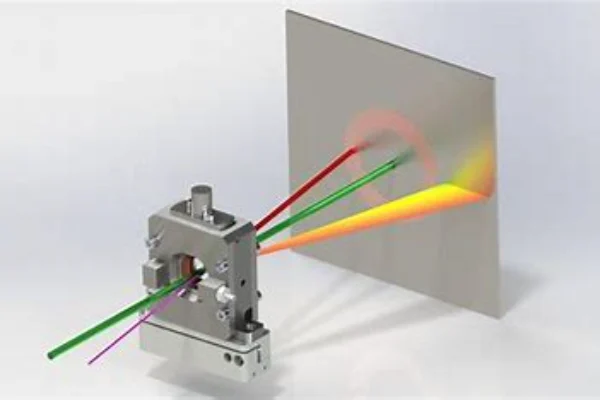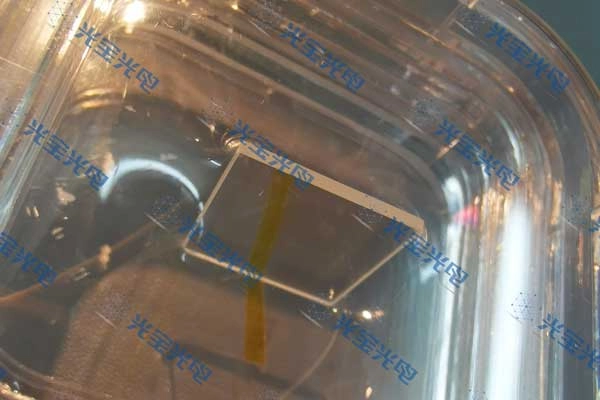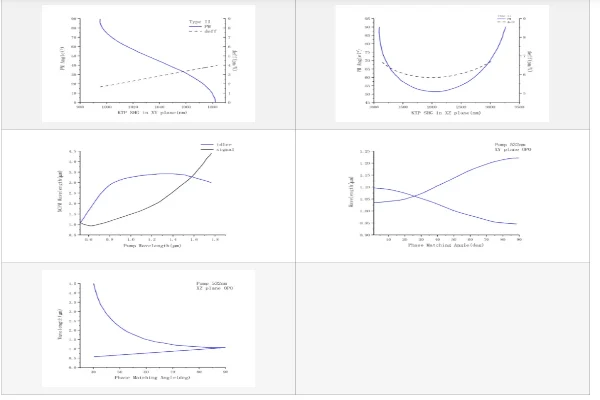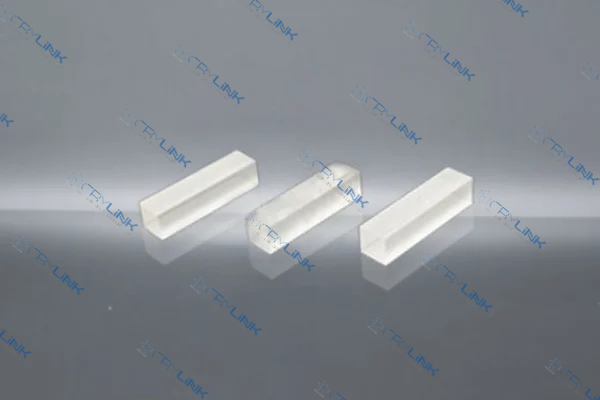Introduction to Optical Parametric Amplifiers (OPAs)
Optical Parametric Amplifiers (OPAs) have revolutionized the field of optics, providing a crucial tool for the amplification of light signals. The core of these amplifiers lies in the crystals they use, which are responsible for the critical processes of conversion and amplification. Among the various types of crystals used in OPAs, Potassium Titanyle Arsenate (KTA) and Potassium Titanyl Phosphate (KTP) have emerged as prominent choices due to their unique properties.
OPAs work by converting an input light signal into an amplified output signal, a process that relies heavily on the properties of the crystal used. The crystal serves as the medium for the light signal, facilitating its amplification through a process known as parametric amplification. This process involves the interaction of the input light signal with the crystal, leading to the generation of an amplified output signal.
KTA and KTP crystals have gained prominence in the field of OPAs due to their unique properties. KTA is known for its high damage threshold and broad transparency range, making it a versatile choice for various applications. Its high damage threshold means that it can withstand high-intensity light without suffering damage, making it a durable choice for high-power applications. Its broad transparency range allows it to operate over a wide range of wavelengths, providing more flexibility in tuning the output wavelength of the OPA.
KTP, on the other hand, is known for its high non-linear optical coefficient, which makes it highly efficient in converting the frequency of light. This efficiency is crucial in applications that require high conversion efficiency, such as second harmonic generation (SHG) and sum-frequency generation (SFG). In addition to its high efficiency, KTP also has a broad phase-matching range, which allows it to efficiently convert a wide range of input frequencies, making it a flexible choice for various OPA applications.
In conclusion, the choice of crystal in an OPA, whether it’s KTA or KTP, plays a crucial role in determining its performance. These crystals, with their unique properties, have the potential to significantly enhance the capabilities of OPAs, paving the way for advancements in the field of optics. As we continue to explore and harness the potential of these crystals, we can expect to see them play an increasingly important role in the future of optical technology.

Understanding KTA and KTP Crystals
As we delve deeper into the properties and applications of KTA and KTP crystals, it becomes clear that their unique characteristics extend beyond the realm of OPAs.
The KTA crystal, with its high damage threshold, is not only durable but also reliable in high-power applications. This makes it an ideal choice for systems that require consistent performance under intense conditions. The broad transparency range of KTA further enhances its versatility, allowing it to be used in a variety of optical systems beyond OPAs, such as electro-optical modulators and Q-switches for lasers. Its broad tunability also opens up possibilities for its use in emerging fields such as terahertz wave generation and detection, where a wide range of output wavelengths is required.
KTP, with its high non-linear optical coefficient, is not just efficient but also effective in frequency conversion processes. This makes it a preferred choice for applications that require high conversion efficiency, such as second harmonic generation (SHG) and sum-frequency generation (SFG). The broad phase-matching range of KTP further enhances its flexibility, allowing it to be used in a wide range of input frequencies. This makes KTP a suitable choice for diverse applications, from laser frequency doubling to parametric down-conversion for quantum communication.

Moreover, both KTA and KTP crystals exhibit excellent thermal properties, making them stable and reliable in varying temperature conditions. This is particularly important in high-power and high-repetition-rate systems, where thermal effects can significantly impact performance.
In the realm of non-linear optics, KTA and KTP crystals continue to be the subject of extensive research and development. Scientists and engineers are constantly exploring new ways to leverage their unique properties to develop more efficient and versatile optical systems. As our understanding of these crystals deepens, we can expect to see them play an increasingly important role in the advancement of optical technology.
In conclusion, the unique properties of KTA and KTP crystals extend beyond their use in OPAs, making them versatile and valuable components in a wide range of optical systems. Whether it’s the high damage threshold and broad tunability of KTA or the high non-linear optical coefficient and broad phase-matching range of KTP, these crystals offer a combination of durability, efficiency, and flexibility that is hard to match. As we continue to explore and harness their potential, the future of optical technology looks bright indeed.

Comparing KTA and KTP in OPAs
As we delve deeper into the comparison between KTA and KTP in the context of Optical Parametric Amplifiers (OPAs), it’s important to consider the broader implications of their unique properties and how they translate into real-world applications.
The tunability of KTA and KTP is a significant factor in their utility within OPAs. The broader transparency range of KTA allows it to operate over a wider range of wavelengths, providing more flexibility in tuning. This is particularly beneficial in applications that require a wide range of output wavelengths, such as spectroscopy and laser frequency conversion. The ability to tune the output wavelength to precisely match the requirements of a specific application is a powerful tool, enabling more precise and efficient operations.
Phase-matching, another critical factor in OPAs, determines the efficiency of the frequency conversion process. Both KTA and KTP exhibit excellent phase-matching properties, but KTP’s higher non-linear optical coefficient gives it an advantage, resulting in higher conversion efficiencies. This efficiency is crucial in applications that require high conversion efficiency, such as second harmonic generation (SHG) and sum-frequency generation (SFG). The ability to convert input frequencies efficiently and effectively is a key determinant of the overall performance of an OPA.

The performance of KTA and KTP with different pump sources is another important consideration. KTA’s higher damage threshold makes it more resilient to high-intensity pump sources, reducing the risk of crystal damage and extending the lifespan of the OPA. This resilience is particularly important in high-power applications where the risk of crystal damage is high. On the other hand, KTP’s high non-linear optical coefficient and broad phase-matching range make it an efficient and flexible choice, capable of delivering high performance across a range of different pump sources.
In conclusion, the choice between KTA and KTP in OPAs will ultimately depend on the specific requirements of the application. KTA’s broader tunability and higher damage threshold make it a versatile and durable choice, while KTP’s higher non-linear optical coefficient and broad phase-matching range make it an efficient and flexible choice. As we continue to explore and harness the potential of these crystals, we can expect to see them play an increasingly important role in the advancement of optical technology. The future of OPAs looks bright indeed, with KTA and KTP leading the way.
Conclusion: KTA vs. KTP in OPAs
In the world of Optical Parametric Amplifiers (OPAs), the choice between Potassium Titanyle Arsenate (KTA) and Potassium Titanyl Phosphate (KTP) crystals is a pivotal one. Each crystal brings its unique strengths to the table, making the decision a matter of specific application requirements.
KTA, with its broader tunability and higher damage threshold, stands out as a versatile and durable choice. Its broad transparency range allows it to operate over a wide range of wavelengths, providing more flexibility in tuning. This is particularly beneficial in applications that require a wide range of output wavelengths, such as spectroscopy and laser frequency conversion. The high damage threshold of KTA means it can withstand high-intensity light without suffering damage, making it a durable choice for high-power applications. This resilience to damage not only extends the lifespan of the OPA but also ensures consistent performance under intense conditions.

On the other hand, KTP, with its higher non-linear optical coefficient, leads to higher conversion efficiencies, making it an efficient choice for OPAs. The high non-linear optical coefficient of KTP means that it can efficiently convert the frequency of light with minimal loss of energy. This efficiency is crucial in applications that require high conversion efficiency, such as second harmonic generation (SHG) and sum-frequency generation (SFG). Furthermore, KTP’s broad phase-matching range allows it to efficiently convert a wide range of input frequencies, making it a flexible choice for various OPA applications.
In conclusion, the choice between KTA and KTP in OPAs will ultimately depend on the specific requirements of the application. Whether it’s the versatility and durability of KTA or the efficiency and flexibility of KTP, both crystals offer a combination of properties that can be harnessed to optimize the performance of OPAs. As we continue to explore and harness the potential of these crystals, we can expect to see them play an increasingly important role in the advancement of optical technology. The future of OPAs looks bright indeed, with KTA and KTP leading the way.
Frequently Asked Questions
- What is the main difference between KTA and KTP crystals?
KTA crystals have a broader tunability and higher damage threshold, while KTP crystals have a higher non-linear optical coefficient, leading to higher conversion efficiencies. - Why is phase-matching important in OPAs?
Phase-matching is crucial as it determines the efficiency of the frequency conversion process in OPAs. - Can both KTA and KTP be used with different pump sources?
Yes, both KTA and KTP perform well with different pump sources. However, KTA’s higher damage threshold makes it more resilient to high-intensity pump sources. - Which crystal is more efficient in frequency conversion?
KTP, with its higher non-linear optical coefficient, is generally more efficient in frequency conversion. - Which crystal is more durable in OPAs?
KTA, with its higher damage threshold, is generally more durable and resistant to damage in OPAs.

Frank
Frank graduated from the University of Shanghai for Science and Technology, majoring in optics. As a technical engineer at Crylink Company, he deeply understands crystal materials and laser components.
Related Video(s) with this Article
Related Product(s) with this Article
Related Application(s) with this Article
